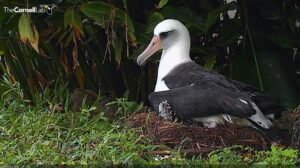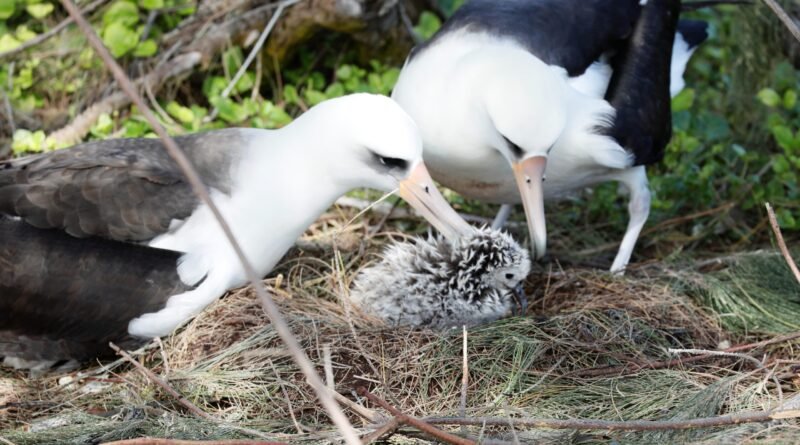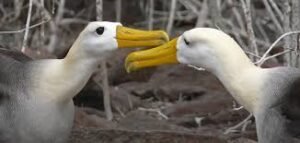Alarming Threats to Albatross Breeding
Albatrosses, with their vast wingspans and graceful gliding, are among the most majestic seabirds roaming our oceans. Yet, these iconic birds face numerous threats to their breeding sites, endangering their survival. In this article, we delve into the importance of albatrosses to ecosystems, the human activities impacting their breeding grounds, the invasive species and predators threatening their survival, the issue of accidental bycatch in fisheries, conservation efforts, and the urgent need for collective action to protect these magnificent birds.
I. Introduction
A. The Magnificent Albatross: An Overview
Albatrosses are renowned for their impressive wingspans and long-distance oceanic flights. With their distinctive appearance and aerial prowess, they have captivated the imagination of sailors and naturalists for centuries.
B. Importance of Albatross to Ecosystems
Albatrosses play a vital role in marine ecosystems, acting as indicators of ocean health and contributing to nutrient cycling through their feeding habits. Their presence influences the distribution and abundance of marine species, making them crucial for ecosystem balance.
C. Significance of Albatross Breeding Sites
Breeding sites, often located on remote islands and atolls, serve as critical habitats for albatrosses to raise their young. These sites provide shelter, nesting grounds, and access to food resources essential for their survival and reproductive success.
II. Human Activities Impacting Albatross Breeding
A. Overfishing and Competition for Food
Overfishing and depletion of fish stocks pose a significant threat to albatross populations, as these birds rely on abundant prey, such as squid and fish, for nourishment. Competition for limited food resources can lead to malnutrition and reproductive challenges.
B. Climate Change and Habitat Loss
Climate change exacerbates existing threats to albatross breeding sites, leading to rising sea levels, changing ocean temperatures, and altered weather patterns. These changes disrupt nesting habitats, affect food availability, and increase the frequency of extreme weather events.
C. Pollution: Plastics and Chemicals
Pollution, particularly plastic debris and chemical contaminants, poses a grave danger to albatrosses and other marine wildlife. Ingestion of plastic debris can cause injury, starvation, and death, while exposure to pollutants can lead to reproductive issues and compromised immune systems.
III. Invasive Species and Predators Threatening Albatross Survival
A. Invasive Rats and Mice on Breeding Islands
Invasive rodents, such as rats and mice, pose a significant threat to albatross breeding sites by preying on eggs, chicks, and nesting adults. Their presence disrupts breeding colonies and can lead to population declines if left unchecked.
B. Predation by Feral Cats and Dogs
Feral cats and dogs introduced to breeding islands pose a direct threat to albatross populations, as they prey on vulnerable chicks and nesting adults. Their predatory behavior can decimate breeding colonies and hinder reproductive success.
C. Impact of Introduced Species on Albatross Populations
Introduced species, including plants and animals, can outcompete native vegetation and prey species, altering the ecological balance of albatross breeding sites. These changes can disrupt nesting habitats and food availability, further jeopardizing albatross survival.
IV. Accidental Bycatch and Fisheries Interactions
A. Albatross Fatalities in Longline Fisheries
Accidental bycatch in commercial fisheries, particularly longline fishing operations, is a major threat to albatross populations worldwide. Albatrosses are attracted to baited hooks and can become entangled or hooked, resulting in injury or death.
B. Mitigation Measures: Bycatch Mitigation Devices
Efforts to reduce albatross bycatch include the use of bycatch mitigation devices, such as bird scaring lines, weighted lines, and hook shields. These devices help deter albatrosses from interacting with fishing gear, reducing the risk of entanglement and mortality.
C. Collaborative Efforts to Reduce Albatross Bycatch
Collaborative initiatives between governments, conservation organizations, and the fishing industry aim to develop and implement bycatch mitigation measures. These efforts involve research, technology development, training, and policy advocacy to protect albatrosses and other seabirds.
V. Conservation Efforts and Future Prospects

A. Protected Areas and Marine Reserves for Albatross Conservation
Establishing protected areas and marine reserves is essential for safeguarding albatross breeding sites and their associated ecosystems. These areas provide sanctuary for nesting colonies, regulate human activities, and promote habitat restoration efforts.
B. Research and Monitoring for Albatross Populations
Continuous research and monitoring are critical for understanding albatross ecology, population dynamics, and threats to their survival. Long-term monitoring programs help assess the effectiveness of conservation measures and guide management decisions.
C. Public Awareness and Engagement in Albatross Conservation
Raising public awareness about the plight of albatrosses and the importance of conservation is essential for fostering support and collective action. Education campaigns, outreach programs, and ecotourism initiatives can inspire individuals to take steps to protect albatrosses and their habitats.
VI. Summary
A. The Urgency of Protecting Albatross Breeding Sites
Albatrosses face a myriad of threats to their breeding sites, from human activities to invasive species and accidental bycatch. Urgent action is needed to address these challenges and ensure the long-term survival of these magnificent seabirds.
B. Collective Action Needed to Safeguard Albatross Populations
Collaborative efforts between governments, conservation organizations, the fishing industry, and the public are essential for protecting albatross breeding sites and mitigating threats to their survival. By working together, we can safeguard these majestic birds for future generations to admire and cherish.
FAQs:
Q1: How can individuals help protect albatross breeding sites? A: Individuals can support albatross conservation efforts by reducing plastic use, supporting sustainable fishing practices, participating in beach clean-ups, and advocating for protected areas and marine reserves.
Q2: What are some success stories in albatross conservation efforts? A: Successful conservation initiatives include the eradication of invasive species from breeding islands, the implementation of bycatch mitigation measures in fisheries, and the establishment of protected areas for albatross conservation.
Q3: What are the long-term implications of losing albatross populations? A: The loss of albatross populations would have far-reaching ecological consequences, affecting marine food webs, nutrient cycling, and ecosystem resilience. It would also diminish the cultural and aesthetic value of these iconic seabirds.


